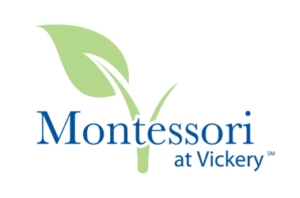Montessori Primer: A Day in Our Lives, Part 2 – A Daily Timeline
Today, we continue our look at a day in the life of a Montessori student with an overview of the timeline of a typical day in the Montessori classroom.
7:45 to 8 a.m. – Day Begins
Guides are greetings students at the door with a warm handshake. The students are learning confidence as they greet their teacher with eye contact and a hearty handshake. They then place their items in their cubby and set out to choose their first work.
8 a.m. – Three Hour Work Period Begins
Students work independently. The teacher is providing individual and group lessons. The assistant is reinforcing the importance of the environment’s rules and routine. Children will choose pre-reading work such as spelling, sight words, big movable alphabet, while others will choose golden bead addition or stamp game. Younger children are building concentration in practical life by pouring water or spooning. Others who have a bit more energy may be scrubbing tables. It is wonderful to see the child with a great imagination using the farm for not only creative enjoyment but language work as they label the nouns on the farm.
9:30 a.m. – False Fatigue Occurs
It is generally around this time that noise levels tend to escalate in a Montessori environment. Usually there are several wanderers who are restless from their work. As Maria Montessori observed classrooms, she referred to this time as “False Fatigue.” To an outsider, this time may seem disorganized. The Montessori guide notices this phenomenon and remains calm. The students will feel this ease and the restlessness will subside and the students will continue their work until 11:00 a.m.
10:45 a.m. – Clean Up and Outdoor Playtime
The guides ring the bell to signal it is time to clean up. The students tidy their environment and everyone joins in for line time. After line, everyone lines up for outdoor play. Everyone plays 30 minutes outside in our beautiful Montessori outdoor environment. Our outdoor space is perfect for running, gardening, riding tricycles, climbing, and having fun on the slide. And before anyone realizes, the 30 minutes is over!
11:15 a.m. – Lunch Time
Some of our friends go home for the day. The rest of the class begins washing their hands for lunch. Grace and courtesy lessons are practiced during our lunchtime: napkins in laps, using utensils, please and thank you, and restoring the environment.
12:00 to 2 p.m. – Rest Time and Kindergarten Work Cycle
By this time, students have finished their lunch and restored the environment. As the younger students are preparing for a one-hour rest time, the kindergarten students are practicing more complex lessons. They are working one on one with the teacher in math and language. Students may be learning the bank game, advanced language lessons, and reading work.
2 to 2:15 p.m. – Saying our Goodbyes
At the end of the day, everyone sits for one final line time. The Montessori guide reads to the students as the assistant helps prepare the students to go home. After the line is over, the students line up at the door, say goodbye to their friends, and are escorted to car line.
What a wonderful day everyone has had!



